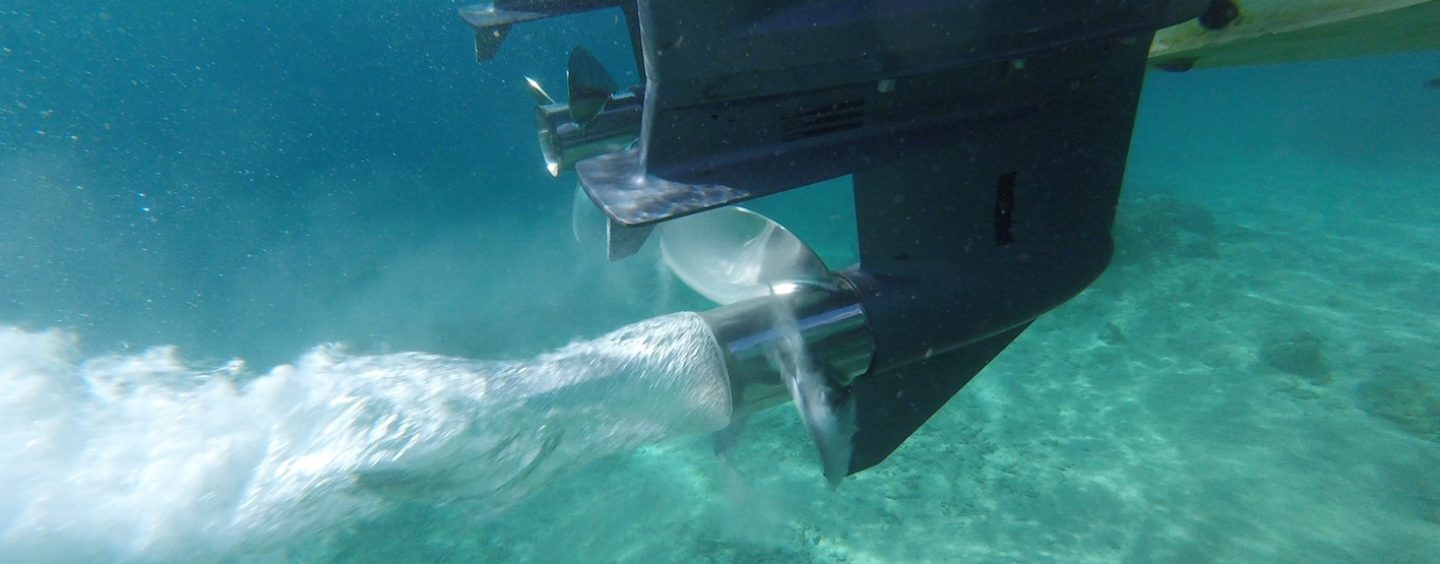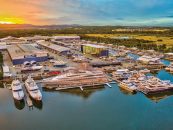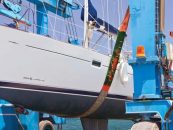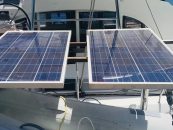The propeller on your boat affects a variety of performance factors, including the vessel’s speed, handling, comfort, engine life, acceleration, fuel economy, and even safety. It is always a good idea, then, to pay attention to the quality and fit
of your boat’s propeller, so you achieve optimum boat performance.
A trusted expert in this field is Steve Evans. The founder and owner of Propeller Warehouse, as well as Oz Marine and Wizard Tackle, Evans has over 35 consecutive years of industry experience providing advice to consumers and marine dealers about propellers for all types of vessels, from sailing yachts and ski boats, to tinnies and sport-fishing boats. Evans also brought the well- regarded Solas propellers to Australia, distributing them to wholesale and retail buyers. Today, he has developed his own brand and range of propellers.
As you can imagine, with more than three decades of experience selling and repairing propellers, as well as involvement in propeller trial-testing for major manufacturers, Evans has seen many changes in the market and the technology used. “One of the biggest changes I’ve seen is the emergence of different blade shape propeller geometries in the same pitch. This has been done to best suit different horsepower groups and different hulls. There is now much more variety, to better match more power groups,” Evans notes.
Another big change has been that of interchangeable bushes/hubs to make one propeller size fit other brands. “However, the reliability of rubber hubs is still better than the new systems created by different prop manufacturers,” according to Evans.
Furthermore, engine technology has improved over the years. “It has moved from two-stroke reed petal carbies and electrical reliability from points/coils in the 70s and 80s, to newer solid-state ignitions and transition outboards,” says Evans. “Reliability has significantly improved, which means boaties can explore further offshore.”
More change came during the 1980s. Evans recalls, “Honda was the first company to promote and establish four-stroke range on a large commercial scale accepted by fishermen and recreational boaties. At the time, I remember they faced a lot of undeserved criticism from the USA players like Mercury, OMC, and Chrysler. However, decades later, history has proven that Honda’s marine engine philosophy regarding the benefits of four-stroke over two-stroke design was well-founded.”
Plus, at the same time, Japanese manufacturers also led the way with regard to outboards. “Japanese products proved to be more fuel efficient and reliable than those available in the previous decade,” notes Evans. “Many engine improvements derived from the Japanese “Kei” car, and motorcycle racing engines propelled the rapid marine growth of makers – Suzuki and Yamaha in particular. They exported a lot of products into the giant USA marine market. This was at a time when the American brands were trying to develop their own engine technologies.”
After that, more change came. “With the new, responsive fuel-efficient horsepower being delivered into thrust, more blade shapes and area ratios were required to match different boats,” says Evans. “As a result, the four-blade propellers came into the picture in the mid-80s.”
Evans contributed to a history-making event in the boating industry himself, too. In 1999, adventurer Hans Tholstrup showcased Honda technology to the world. He took a 5.4-metre Haines Signature vessel, powered by a 90hp Honda four-stroke engine, on a 7,500-kilometre odyssey from Darwin to Okinawa in Japan. Evans remembers, “He would never have been able to carry the fuel and plane without the four-blade propeller I supplied.”
More recently, over the past 15 to 20 years, Evans has particularly seen propeller manufacturing and casting techniques improve. “Now, manufacturers are embracing robotic grinding and polishing in stainless steel,” says Evans. “Plus, compression casting and high-strength electromagnetic centrifugal casting is seen as the next level, game- changing advance that will take the propeller industry into the future.”
Another key change Evans has noticed relates to variety. “The boating public has far more choice than ever before when it comes to propellers. People can better select the best products for their needs as engine makers offer real-time fuel management systems to demonstrate the results of propeller selections. Mercury Marine excel at this, with their electronic venture partners offering boaties excellent real-time engine data to consider.”
As for where the market is headed lately, Evans points to aluminium. “The big game-changer for the future is likely to be the development of high- strength aluminium. For the 100-horsepower to 425-horsepower engine sizes, conventional aluminium and stainless steel were the only options for the past 60 years for outboard engines and sterndrives. However, that’s changing.”
Evans likes the new technology coming from Korea. “The products coming from Dongsan Tech will certainly challenge heavy stainless steel propeller dominance. Their designs offer 50 percent weight reduction for the same strength as stainless steel. They also reduce purchase costs by about half. I think outboard engine makers will embrace this new propeller technology. It will help to lessen the impact of gearcase drive-train damage, and in turn, reduce warranty claims. It seems like a no-brainer, commonsense option.”
Evans has tips for buyers making a decision about which propeller to use on their vessel. “Keep in mind that propellers are, like life, all about compromise. On a boat, there is no such thing as the perfect, single propeller that’s variable in pitch/diameter and area ratio to best suit changing boating weather conditions. Most engine hours are done at cruising speeds and boat conditions govern those speeds.”
Yet, there are some elements to consider more than others. Evans suggests a spare propeller is always a good idea. It can be changed at sea if you need to make it home. On a final note, he advises, “Crucial to the long life of an engine is getting expert propeller advice based on regional boating conditions, and making sure the propeller suits the engine maker’s recommended rev range.”
Interview with Steve Evans
By Kellie Byrnes
Propeller Warehouse specialises in propeller sales, services, rebuilds, and modifications and is located in Warana on the Sunshine Coast. Head to PropellerWarehouse.com.au for more details,
or contact Steve and the team on (07) 5437 9400.






























